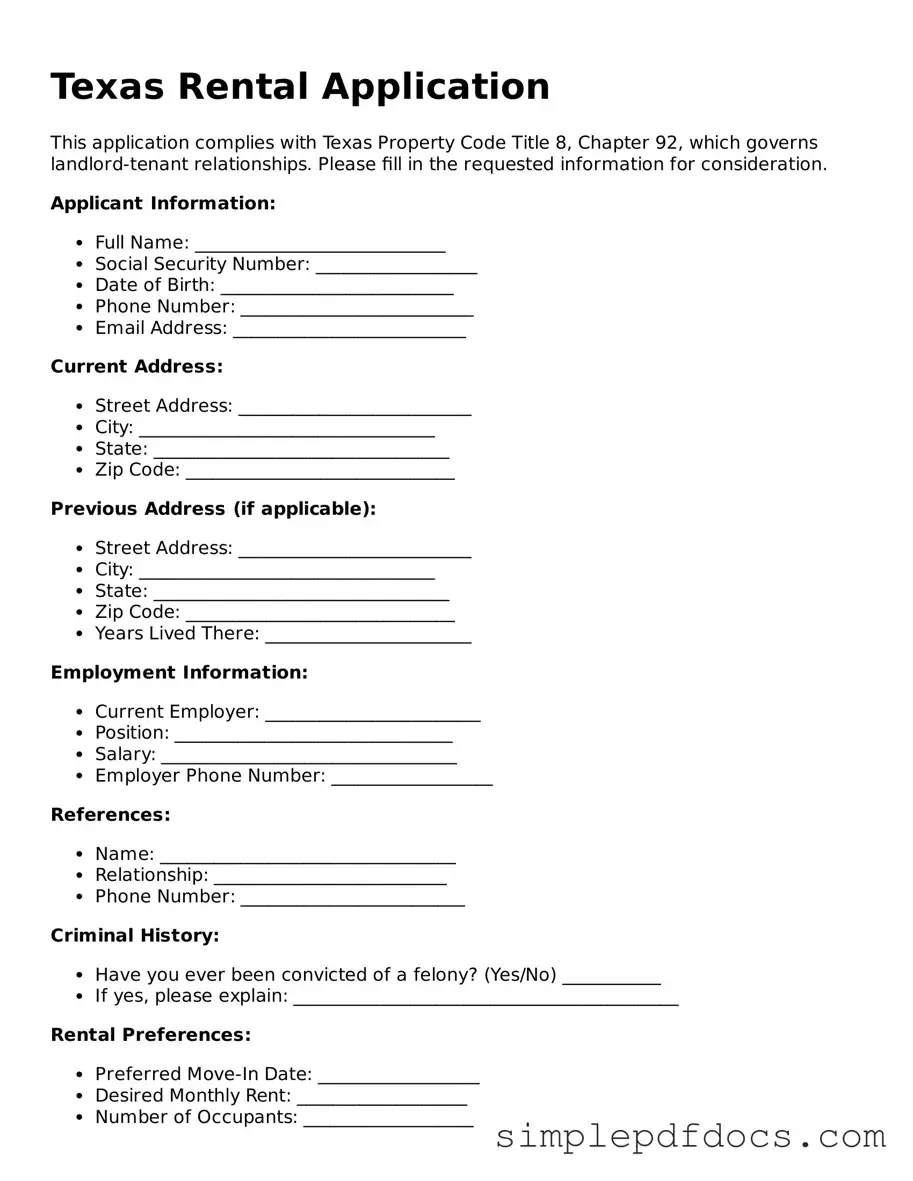Legal Rental Application Document for the State of Texas
The Texas Rental Application form is a crucial document used by landlords to screen potential tenants before leasing a property. This form collects essential information about the applicant, including their rental history, employment status, and personal references. Understanding this application can help both landlords and tenants navigate the rental process more effectively.
Get Document Here
